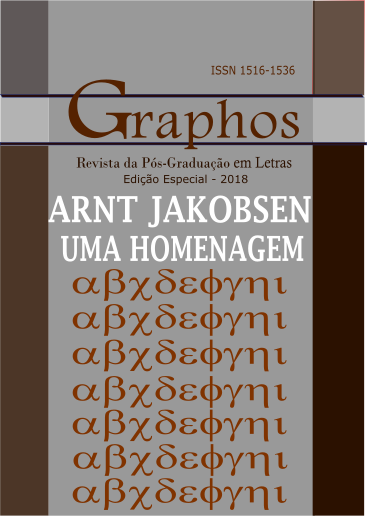What’s in the eyes of the translators? Translog with eye tracking
Abstract
Downloads
References
CARL, M. Segments of reading and segments of writing of professional and student translators. Trabalho apresentado na International Conference of the German Cognitive Linguistics Association, 4. (DGKL4), Bremen, 7-9 out. 2010.
DRAGSTED, B. Segmentation in translation and translation memory systems. Copenhague: Samfundslitteratur, 2004.
ERICSSON, K-A; SIMON, H. Protocol analysis: verbal reports as data. Cambridge, MA:
MIT Press, 1993.Eye-to-IT project. Disponível em: <http://cogs.nbu.bg/eye-to-it/>. Acesso em: 09 nov. 2017.
GOLDMAN-EISLER, F. Pauses, clauses, sentences. Language and Speech, v. 15, p. 103-113, 1972.
YÖNÄ, J.; RADACH, R.; DEUBEL, H. (Ed.). The mind’s eye: cognitive and applied aspects of eye movement research. Amsterdã: Elsevier Science, 2003.
IMMONEN, S. Translation as a writing process: pauses in translation versus monolingual text production. Target, v. 18, n. 2, p. 313-335, 2006.
IMMONEN, S.; MÄKISALO, J. Pauses reflecting the processing of syntactic units in monolingual text production and translation. Hermes, v. 44, p. 45-61, 2010.
JENSEN, A. The effects of time on cognitive processes and strategies in translation. 2001. 196 f. Tese (Doutorado) – Copenhagen Business School, Copenhagen, 2001.
JUST, M. A.; CARPENTER, P. A. A theory of reading: from eye fixations to comprehension. Psychological Review, v. 87, n. 4, p. 329-354, 1972.
KRINGS, H. P. Repairing Texts: empirical investigations of machine translation post-editing processes. Kent: Kent State University Press, 2003.
SCHILPEROORD, J. It’s about time. Amsterdã: Rodopi, 1996.







